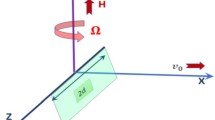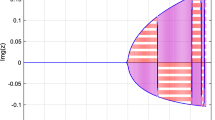Abstract
The mechanism of discontinuity behavior has important significance in the study of thermal science, such as fire, combustion, explosion and heat transfer. This sort of discontinuity behavior and the catastrophe caused by system nonlinearity may be equivalently classified according to the catastrophe model promulgated by catastrophe theory. Under the conditions of uniform temperature and thermal isolation, the self-ignition behavior of a Semenov System can be viewed as a result of the fold catastrophe of the system.
Similar content being viewed by others
References
Fu Weibiao, Zhang Yonglian, Wang Qing’an, Combustion (in Chinese), Beijing: Higher Education Press, 1990, 274.
Feng Changgen, Thermal Explosion Theroy (in Chinese), Beijing: Science Press, 1988, 10.
Xu Jinyuan, Xu Tongmuo, Combustion (in Chinese), Beijing: China Machine Press, 1980, 76–77.
Author information
Authors and Affiliations
About this article
Cite this article
Xie, Z., Fan, W. & Wang, Q. Catastrophe mechanism and classification of discontinuity behavior in thermal science (I). Chin.Sci.Bull. 45, 1813–1817 (2000). https://doi.org/10.1007/BF02886274
Received:
Accepted:
Issue Date:
DOI: https://doi.org/10.1007/BF02886274




